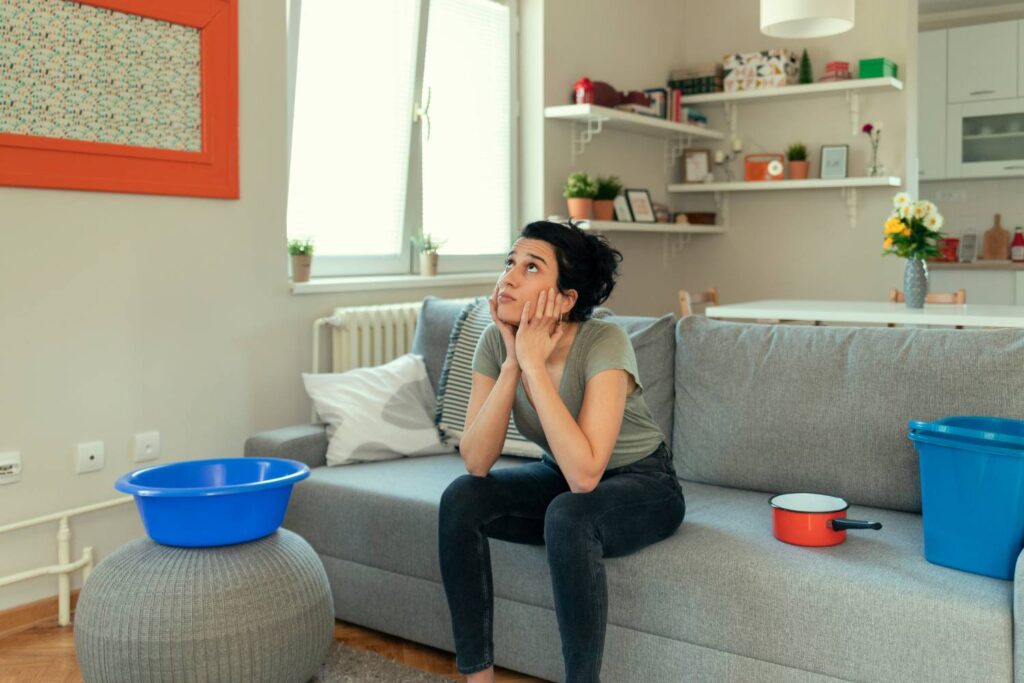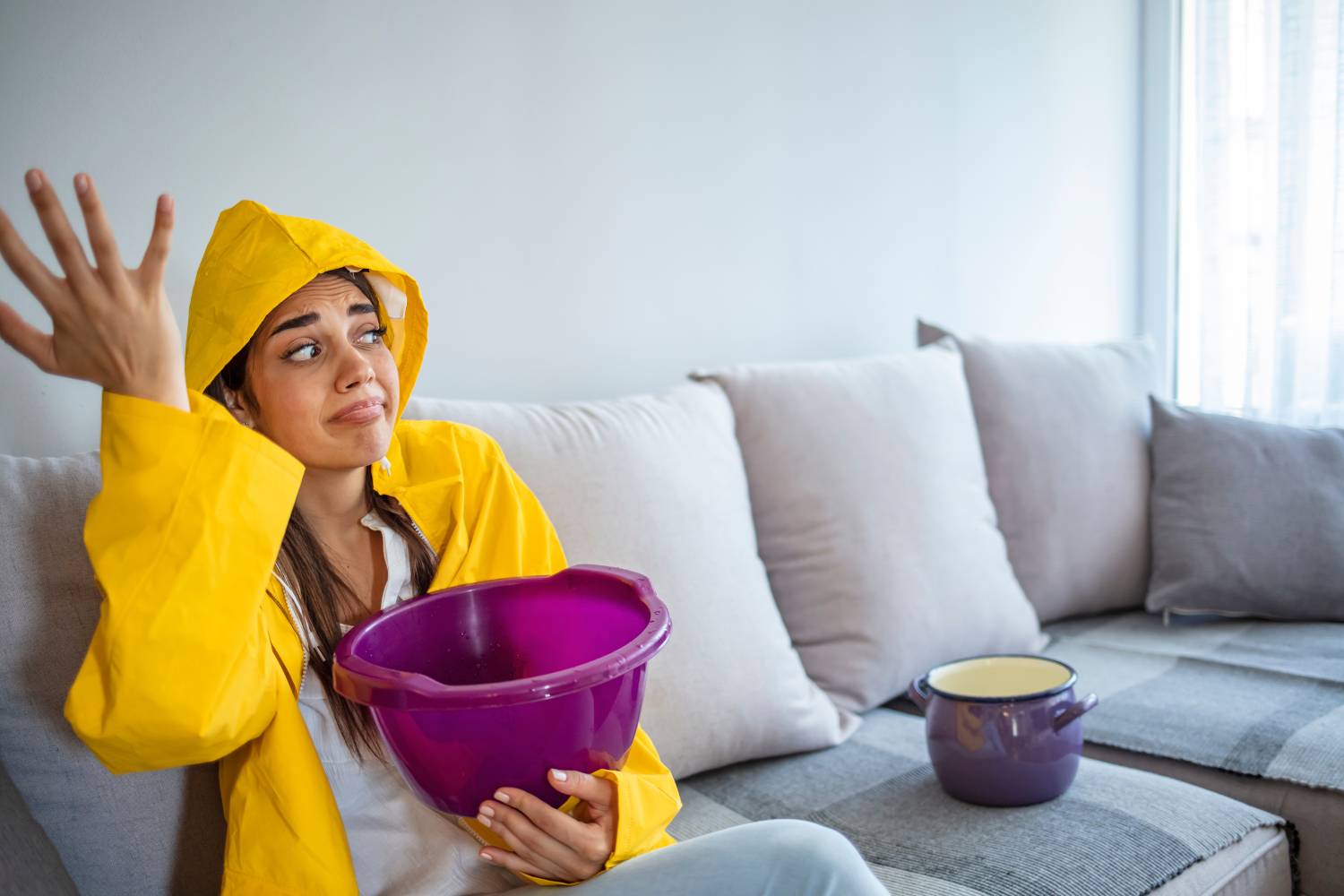A small roof leak might seem like a minor inconvenience, but its repercussions can be extensive and costly if left unaddressed. This blog delves into the various risks associated with ignoring a roof leak, highlighting the immediate and long-term impacts on your home's structure, your health, and your finances. By understanding these risks, homeowners can appreciate the importance of timely repairs and proactive maintenance to safeguard their property and well-being.
Read on to discover how a seemingly insignificant leak can lead to significant problems and why addressing roof issues promptly is crucial for the integrity and value of your home.
What Are The Immediate Risks Of Ignoring A Roof Leak?
Ignoring a roof leak might seem like a minor issue, but the consequences can be severe and far-reaching. This blog explores the immediate risks associated with neglecting roof leaks, emphasising the importance of timely repairs to protect your property, health, and finances.
Structural Damage
Wood Rot and Weakening
Water infiltration is a significant concern when it comes to the structural integrity of your home. When water seeps into the wooden framework, it initiates a process of wood rot, which gradually breaks down the wood fibres.
This degradation weakens the structure, potentially leading to serious safety hazards. For instance, weakened beams and supports can result in sagging floors, walls, and ceilings, posing a risk of collapse if left unaddressed. The longer the wood remains exposed to moisture, the more extensive the damage, necessitating costly repairs or even complete replacements.
Compromised Materials
Moisture infiltration doesn't only affect wood; it also compromises other critical building materials. Drywall, for example, can absorb water, causing it to swell, warp, and eventually disintegrate. This not only affects the aesthetics of your walls but also diminishes their structural support.
Similarly, insulation becomes less effective when wet, losing its thermal resistance properties. This can lead to increased energy bills as your heating and cooling systems work harder to maintain a comfortable indoor temperature. Over time, the cumulative effect of compromised materials can lead to significant structural and financial implications.
Mold and Mildew Growth
Persistent roof leaks create an ideal environment for mould and mildew to thrive. These fungi require moisture to grow, and once established, they can spread rapidly throughout your home. Mold spores can infiltrate your HVAC system, dispersing through the air and settling on various surfaces.
Besides causing unpleasant odours and unsightly stains, mould poses serious health risks, including respiratory issues, allergic reactions, and aggravation of asthma symptoms. The presence of mould and mildew not only damages building materials but also necessitates thorough and often expensive remediation processes to ensure your home is safe and habitable.
Health Hazards
Respiratory Issues
Mould spores released into the air pose a significant health risk, especially for individuals with pre-existing respiratory conditions. When these spores are inhaled, they can irritate the respiratory tract, leading to issues such as coughing, wheezing, and throat irritation.
Over time, prolonged exposure can exacerbate chronic respiratory conditions, such as asthma, causing more frequent and severe asthma attacks. Individuals with weakened immune systems or chronic lung diseases are particularly vulnerable to these effects.
Allergic Reactions
Mould exposure can trigger allergic reactions in many people. Symptoms of mould allergies often include chronic coughing, sneezing, nasal congestion, and itchy or watery eyes. These reactions can be particularly troublesome for individuals with sensitivities to mould, as even small amounts can provoke significant discomfort. In some cases, mould exposure can lead to more severe allergic responses, such as sinus infections or inflammation of the respiratory passages, further impacting overall health and well-being.
Pest Infestation
Moist environments created by roof leaks not only promote mould growth but also attract various pests, such as dust mites, cockroaches, and rodents. These pests thrive in damp conditions and can exacerbate health issues in several ways. Dust mites, for example, are known to trigger allergic reactions and asthma symptoms.
Cockroaches can carry bacteria and allergens that contribute to respiratory problems and allergic reactions. Additionally, pests like rodents can introduce other health hazards through their droppings and urine, which can contaminate living spaces and pose serious health risks. The presence of these pests can significantly reduce indoor air quality, leading to a variety of health complications.
Increased Energy Costs
Reduced Insulation Efficiency
When your roof leaks, water can seep into your attic insulation, compromising its effectiveness. Insulation is designed to trap air and create a barrier that helps maintain a stable temperature in your home.
However, waterlogged insulation loses its ability to retain heat in the winter and keep your home cool in the summer. As a result, your heating and cooling systems must work harder to compensate for the lost insulation efficiency, leading to increased energy consumption and higher utility bills.
Temperature Inconsistencies
Compromised insulation can lead to temperature inconsistencies throughout your home. In areas where the insulation is damaged, you may notice that certain rooms are significantly warmer or cooler than others. This uneven distribution of temperature not only causes discomfort but also forces your HVAC system to run more frequently and for longer periods.
The continuous operation of your heating and cooling systems further drives up energy usage and costs. This can be particularly noticeable in homes with open floor plans or multiple levels, where maintaining a consistent temperature is already a challenge.
Damage To Belongings And Interior
Personal Property Damage
When a roof leak occurs, it can cause significant damage to personal property inside your home. Water seeping through the roof can ruin carpets, furniture, electronics, and other valuable items. For instance:
- Carpets and Rugs: Prolonged exposure to water can lead to mould and mildew growth, which not only damages the carpet but also poses health risks.
- Furniture: Wooden furniture can warp or rot when exposed to water, while upholstered furniture can become stained and develop a musty smell.
- Electronics: Water and electronics are a dangerous combination. Even a small leak can cause short-circuiting, rendering your devices unusable and potentially hazardous.
Aesthetic Damage
In addition to damaging personal property, roof leaks can cause a variety of aesthetic issues that diminish your home's appeal and value:
- Water Stains: Unsightly water stains on ceilings and walls are common after a leak. These stains are not only unattractive but also indicate underlying damage that needs to be addressed.
- Warped Wood: Water can cause wooden structures, such as floors and wall panels, to warp. This warping can lead to uneven surfaces and structural instability.
- Damaged Electronics: Beyond functionality, damaged electronics can leave behind aesthetic issues. For example, water-damaged televisions or appliances may exhibit discolouration, rust, or corrosion.
Fire Hazards
Electrical Risks
When water infiltrates a roof and reaches the electrical wiring in your home, it can lead to short circuits. This occurs because water acts as a conductor, allowing electricity to flow through unintended paths.
Short circuits can cause sparks, which are a major fire hazard, especially if they occur near flammable materials such as insulation, wood, or other structural components of your home. The presence of water near electrical systems significantly increases the risk of electrical fires, posing a serious threat to the safety of the occupants and the integrity of the property.
Safety Risks
Exposed wires resulting from roof leaks present a dual danger: electrical shocks and fire hazards. When insulation or other protective coverings on wires deteriorate due to moisture, the wires can become exposed. Anyone coming into contact with these wires could suffer from severe electrical shocks.
Additionally, exposed wires are prone to generating sparks, which can ignite nearby flammable materials, leading to potentially devastating fires. The combination of water damage and compromised electrical systems creates a hazardous environment that demands immediate attention and repair to prevent injury or catastrophic damage to the home.
Increased Repair Costs
Escalating Damage
A small leak might seem insignificant initially, but over time, it can escalate into a major issue. Water can seep into the underlying structure of your roof, causing the wood to rot and the insulation to become ineffective.
This progression can necessitate extensive and costly repairs. In severe cases, the damage might be so extensive that it requires a complete roof replacement. Ignoring a minor leak can thus transform a relatively simple and affordable repair into a significant financial burden.
Interior Repairs
The consequences of a roof leak extend beyond the exterior structure of your home. Water that penetrates the roof can seep into the walls and ceilings, leading to unsightly stains, peeling paint, and damaged plaster.
More critically, prolonged exposure to moisture can foster the growth of mould and mildew, which not only damage your home's interior but also pose serious health risks. Addressing these issues involves comprehensive repairs, including drywall replacement, repainting, and professional mould remediation, all of which can add substantially to your overall repair costs.
Decreased Property Value
Visible Damage
When a roof leak is left unaddressed, it can cause noticeable damage to your home, such as water stains on ceilings and walls, mould growth, and compromised structural integrity. These visible signs of water damage are major red flags for potential buyers.
They indicate not only current issues but also potential future problems. Buyers may be hesitant to purchase a home with obvious signs of neglect, leading to a lower perceived value and, thus, lower offers.
Long-Term Neglect
Ignoring roof leaks can lead to prolonged exposure to water, causing severe damage over time. This can result in extensive repairs being necessary, including replacing drywall, insulation, and even parts of the structural framework.
When potential buyers see that a home has not been well-maintained, they often assume there are other hidden issues, further reducing their willingness to pay a premium price. Long-term neglect can significantly depreciate your home's market value as it signals to buyers that the property may require substantial investment to bring it back to optimal condition.
What Are The Long-Term Consequences Of A Neglected Roof Leak?
Roof leaks, often underestimated, can lead to significant long-term consequences if neglected. Understanding these impacts can help homeowners take timely action to prevent severe damage to their property.
Structural Damage
One of the most critical consequences of a neglected roof leak is structural damage. Water can seep into the wooden framework of your home, causing the wood to rot and weaken over time. This deterioration can compromise the integrity of the entire structure, leading to costly repairs. If left unchecked, the continued exposure to moisture can result in the collapse of beams, ceilings, and walls.
Mould And Mildew Growth
A persistent roof leak creates a perfect environment for mould and mildew to thrive. Mold spores can spread quickly throughout your home, affecting indoor air quality and posing health risks to occupants. Exposure to mould can cause respiratory issues, allergies, and other health problems, particularly for individuals with pre-existing conditions like asthma.
Insulation Damage
Water intrusion from a roof leak can saturate the insulation in your attic and walls, rendering it ineffective. Damaged insulation loses its ability to regulate indoor temperatures, leading to increased energy costs as your heating and cooling systems work harder to maintain a comfortable environment. Additionally, wet insulation can become a breeding ground for mould, compounding the problem.
Electrical Hazards
Roof leaks can also pose significant electrical hazards. Water can infiltrate electrical wiring and fixtures, creating a risk of short circuits and electrical fires. This is particularly dangerous if the leak occurs near electrical panels or outlets. Addressing roof leaks promptly can help prevent these potentially life-threatening situations.
Decreased Property Value
Neglected roof leaks can significantly decrease the value of your property. Visible signs of water damage, such as stains on ceilings and walls, can deter potential buyers and lower your home's market value. Additionally, the cost of repairing extensive damage caused by a long-term leak can be a significant financial burden for prospective buyers, making your property less attractive.
Pest Infestations
A leaking roof can attract pests such as termites, carpenter ants, and rodents, all of which thrive in moist environments. These pests can cause further damage to your home's structure and insulation, leading to additional repair costs. Preventing roof leaks can help keep these unwanted guests at bay and protect your home from further damage.
Compromised Roof Lifespan
Ignoring a roof leak can shorten the lifespan of your roof. The constant exposure to moisture can cause shingles and other roofing materials to deteriorate faster than they should. This means you may need to replace your roof sooner than expected, which can be a significant expense.
Increased Repair Costs
The longer a roof leak is ignored, the more extensive the damage becomes, leading to higher repair costs. What might start as a minor issue can escalate into a major problem requiring extensive repairs to both the roof and the interior of your home. Timely intervention can save you money in the long run by addressing issues before they become severe.
Health Issues
Apart from mould-related health problems, a neglected roof leak can lead to other health issues due to increased humidity and poor air quality. Damp environments can exacerbate conditions like asthma and allergies and create a general feeling of discomfort within the home. Ensuring your roof is well-maintained can help maintain a healthy living environment.
Legal And Insurance Issues
Finally, neglecting roof repairs can lead to legal and insurance issues. Many insurance policies require homeowners to maintain their property to be eligible for coverage. Failing to address a roof leak promptly could result in denied claims, leaving you to cover the repair costs out of pocket. Additionally, if the leak causes damage to a neighbour's property or violates local building codes, you could face legal repercussions.
Conclusion
Ignoring a roof leak can have devastating consequences for your home, health, and finances. From structural damage and mould growth to increased energy costs and potential fire hazards, the risks are far-reaching and costly. Additionally, a neglected roof leak can attract pests, reduce your property value, and lead to extensive and expensive repairs. Health issues and potential legal and insurance complications further highlight the importance of addressing roof leaks promptly.
By understanding these risks, homeowners can better appreciate the critical need for timely repairs and proactive maintenance. Protecting your home from the outset ensures the safety, comfort, and value of your property for years to come. Don't let a minor leak escalate into a major problem—take action today to safeguard your home and well-being.
Frequently Asked Questions
Ignoring a roof leak can lead to severe structural damage. Water infiltration can weaken the roof's structure, causing wood rot, mould growth, and damage to insulation. Over time, this can result in costly repairs or even the need for a complete roof replacement.
Yes, even a small roof leak can escalate into a significant issue. Water can spread and seep into various parts of your home, damaging ceilings, walls, and electrical systems. The longer the leak is ignored, the more extensive and expensive the repairs will become.
A roof leak can severely compromise your home's insulation. Wet insulation loses its effectiveness, leading to higher energy bills as your heating and cooling systems work harder to maintain a comfortable temperature. Additionally, damp insulation can become a breeding ground for mould and mildew.
Yes, there are health risks. Persistent moisture from a roof leak can lead to mould and mildew growth, which can cause respiratory problems, allergies, and other health issues. Prolonged exposure to mould can be particularly harmful to individuals with asthma or weakened immune systems.
Absolutely. A roof leak can significantly reduce your home's resale value. Potential buyers are likely to be deterred by visible water damage and the potential for hidden issues. Furthermore, a history of unresolved roof leaks can lead to lower offers and extended time on the market.


